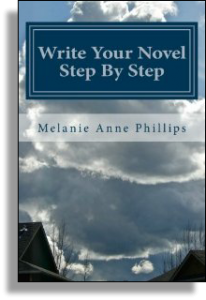Read the complete article including graphs on the Popular Science web site
Category Archives: Writing Tip of the Day
Pirate Lingo Translator
Turn ordinary text into Pirate Speak:
Developing Your Theme
 Write Your Novel Step by Step
Write Your Novel Step by Step
Steps 58 – 61
Developing Your Theme
~ Step 58 ~
Counterpoint
For every human quality, there is the opposite quality. For example, greed is balanced by generosity, denial is balanced by acceptance, and living in fantasy is balanced by remaining grounded in fact.
What is the counterpoint to the message issue you selected? List it and write a brief description of how it is opposite to your message issue.
~ Step 59 ~
Counterpoint Illustrations
The Main Character will usually only exhibit the thematic topic, not the counterpoint, as the story’s message revolves around whether the main character changes his ways or not.
In contrast, the counterpoint must be equally represented through your other characters to avoid making a one-
For this step, list as many scenarios as you can easily devise in which other characters employ the counterpoint quality. Later, we’ll work them into a balanced thematic argument.
~ Step 60 ~
Thematic Conclusion
At the end of the story, there is usually one moment at which the author makes his or her own statement about which is the better side of the thematic conflict.
This moment should not be an attempt to prove which is better, as the proof has been already created by the balance between them in the ongoing examples over the course of the story. Rather, this is the time the author confirms the conclusions the audience has drawn for itself by showing how those characters who favored one side of the conflict ultimately fare against the characters who favored the other.
Referring to your story synopsis and what you have developed already for your theme, devise an event or situation for the end of your story that will provide a conclusion to the thematic conflict by confirming whether the message or counterpoint came out on top.
~ Step 61 ~
Revised Synopsis
Time to blend your enhanced thematic argument into your evolving novel. For this step, revise your existing story synopsis to incorporate the material you have recently developed for your counterpoint and thematic conclusion.
Protagonist Personal
 Write Your Novel Step by Step
Write Your Novel Step by Step
Step 49
Protagonist Personal
Characters have dramatic functions, but the reader or audience needs to identify with them as real people. A necessary but difficult task is to intertwine the personal and structural aspects of each character so that they blend seamlessly together and become interdependent in a unified person.
For your protagonist, what personal qualities or previous experiences have led them to become a protagonist in this particular story, the Prime Mover in the effort to achieve the goal? Conversely, if your character by nature is wishy-washy, how does that affect their efforts when called upon by story circumstances to function as a protagonist?
By integrating all aspects of a character together, it will seem to be driven by real motivations, enacted in a truly human manner.
To further refine your protagonist, refer to the material you developed for that character including personal goal and moral issue. If your protagonist is also your Main Character, consider what you developed there as well.
For this step, write a brief description of your protagonist’s overall nature, incorporating all of this material.
Does your plot end in Success or Failure?
 Write Your Novel Step by Step
Write Your Novel Step by Step
Step 44
Success or Failure?
A story without a clear indication of success or failure is a failure of a story. You need to work out exactly how your readers will know the goal is achieved or not.
This might seem obvious in an action story, but may be much more difficult in a story about character growth.
Success and Failure don’t have to be binary choices; they can be matters of degree. For example, the effort to bring back a treasure may fail, but the adventurers discover one large ruby that fell into their pack. Or, someone seeking true love might find love but with someone who is rather annoying.
Whether either of these examples is a partial success or a partial failure depends largely on how you portray the characters’ attitudes to the imperfect achievement.
In this step, state whether your story ends in success or failure, and how that is measured.
Story Consequences
 Write Your Novel Step by Step
Write Your Novel Step by Step
Step 43
Story Consequences
A goal is what the characters chase, but what chases the characters? The consequence doubles the dramatic tension in a story by providing a negative result if the goal is not achieved.
Consequences may be emotional or logistic, but the more intense they are, the greater the tension. Often it provides greater depth if there are emotional consequences when there is an external goal, and external consequences if there is an emotional goal.
Your novel might be about avoiding the consequences or it might begin with the consequences already in place, and the goal is intended to end them.
If the consequences are intense enough, it can help provide motivation for characters that have no specific personal goals.
In this step, describe the consequences that will occur if the characters in your story fail to achieve the story’s goal.
The Seven Stages of Film Production

Your story has a mind of its own
Writing Tip of the Day – Think of your story as having a mind of its own in which the characters are but facets. This helps you connect with your story as a living thing, rather than simply a structure.


You must be logged in to post a comment.